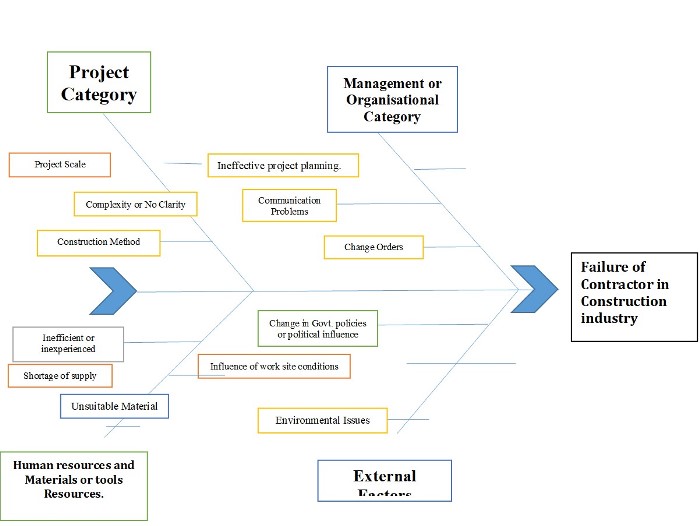for contractor success
FEATURED PAPER
By Vishnu Nair
SKEMA Business School
UAE and Paris, France
ABSTRACT
Failure of projects in the construction industry is a common notion and it is widely increasing with time and different constraints. In this paper we have managed to analyze the various reasons for contractor failures, how contractors can be protected by surety companies and mainly classified and analyzed between the different project delivery methods of projects to arrive at a conclusion “the best project delivery method” that supports successful delivery. Project delivery method defines the process by which we understand the roles and descriptions of the jobs of each personnel in the project undertaken and it is necessary to choose the right project delivery method for the significant project; as identified project delivery method is also one of the main reason that leads to contractor failures. Hence we must identify and categorize the project into the required delivery method and this paper justifies this choice of decisions on a number of attributes related to the alternatives.
Keywords: Contractors, Construction, Failure, Surety, Industry, Project management, Portfolio, Project delivery method, Control, Schedule
INTRODUCTION
The construction industry is an exceptionally widespread industry comprising of activities that range from quarrying, mining, construction of buildings or infrastructures, supply and manufacturing of products and also consists of operations, maintenance and disposal. “The construction industry has proved to generate an output of £110 billion per annum and also contributes to 7% of the GDP in the UK according (to ref Government Construction Strategy)”[1]. Such a widespread and growth promoting industry is interdependent on other industries and hence has a higher rate of chance of failure. “Shedding light on the U.S data of census from 1989 to 2002 the average failure rate in the construction industry is almost 14% which is higher than other industries that sum up to only under 12 percent”[2].
Contractor failure is a miserable and at times a pre-destined circumstance. “According to reports from Bizminer, an analysis of the industry showcased that out of 850,029 contractors operating in the construction industry in 2004 only 649,602 prospered by 2006 which equivalents to a 23.6% failure rate. It also states that companies that had a lifespan of less than a year had an even higher failure rate of 36.8%”.[3]
 Figure 1. Fish bone diagram of root cause analysis of Failure of Contractors in the construction industry[4]
Figure 1. Fish bone diagram of root cause analysis of Failure of Contractors in the construction industry[4]
We can infer from the fishbone diagram the reasons that contractors fail are due to firstly ineffective and inefficient project planning that lacks a good business plan which covers the finance, marketing and development aspects of a company. It also includes not assessing or considering all the risks that may arise during the course of a contract. The absence of such plans can lead to an inability to withhold and forecast developments or changes that can be external or internal. Secondly, strong factors that come from the client side such as change orders in the project which makes it hard for the contractors to adapt accordingly and contain the risks related. As well as to add, delays in validating funds and documental signatures which expands the scope of time. Thirdly, inappropriate accounting which is a major factor that is required to support any project and is the engine which runs the project. Lastly, external factors such as government policy changes or character issues of the contract such as no management plan for the transition of posts in the case of a death or disability of a member.
More…
To read entire paper, click here
Editor’s note: This paper was prepared for the course “International Contract Management” facilitated by Dr Paul D. Giammalvo of PT Mitratata Citragraha, Jakarta, Indonesia as an Adjunct Professor under contract to SKEMA Business School for the program Master of Science in Project and Programme Management and Business Development. http://www.skema.edu/programmes/masters-of-science. For more information on this global program (Lille and Paris in France; Belo Horizonte in Brazil), contact Dr Paul Gardiner, Global Programme Director paul.gardiner@skema.edu.
How to cite this paper: Nair, V.B. (2019). Choosing the best project delivery method for contractor success, PM World Journal, Vol. VIII, Issue VIII, September. Available online at https://pmworldlibrary.net/wp-content/uploads/2019/09/pmwj85-Sep2019-Nair-choosing-best-project-delivery-method-for-contractor-success.pdf
About the Author

Vishnu B. NAIR
Paris, France
![]()
Vishnu Nair is a Mechanical engineer pursuing his Masters in project management and business development in SKEMA Business School, Paris. Born and brought up in the United Arab Emirates and completing High school from the emirate of Abu Dhabi with distinction, he moved to India to complete his Bachelor of technology in Mechanical Engineering from an esteemed Institution of National Importance (National Institute of Technology Rourkela) where he managed to obtain his degree with first class division. He managed to gather work experiences during his internships between his college semesters abroad and across the Middle East from MNC’s like Parsons International Limited. He completed his last assignment in Doha, Qatar under Lotus Contracting. Currently furthering the education by the way of distance learning mentoring course under the tutoring of Dr.Paul D.Giammalvo and also completing his second semester under his Masters.
Vishnu is currently living in Paris, France and is actively looking for international opportunities and internships and can be contacted at vishnu.nair@skema.edu.
[1] Assets.publishing.service.gov.uk. (2018). https://assets.publishing.service.gov.uk/government/uploads/system/uploads/attachment_data/file/61152/Government-Construction-Strategy_0.pdf
[2] Anon, (2018): https://www.census.gov/const/www/cci/frames.html
[3] Bizminer.com. (2018): http://www.bizminer.com/reports/samples/industry-financial.pdf
[4] By Author, with reference to Robles, G., A. Stifi, José L, Gentes, S., & Tienda, P. (2014). Labor Productivity in the Construction Industry -Factors Influencing the Spanish Construction Labor Productivity.









